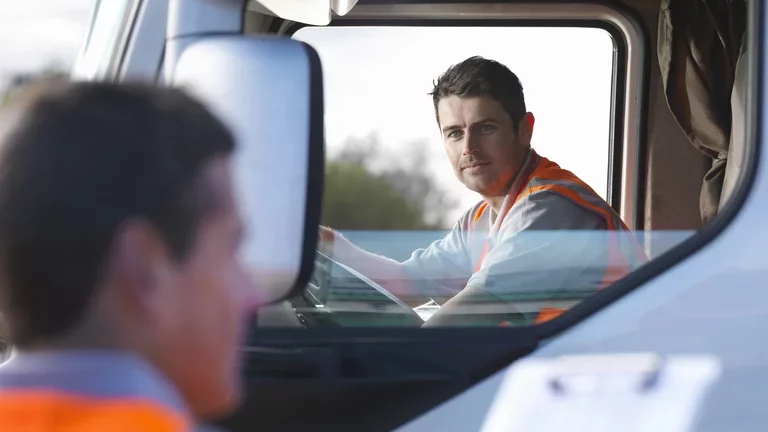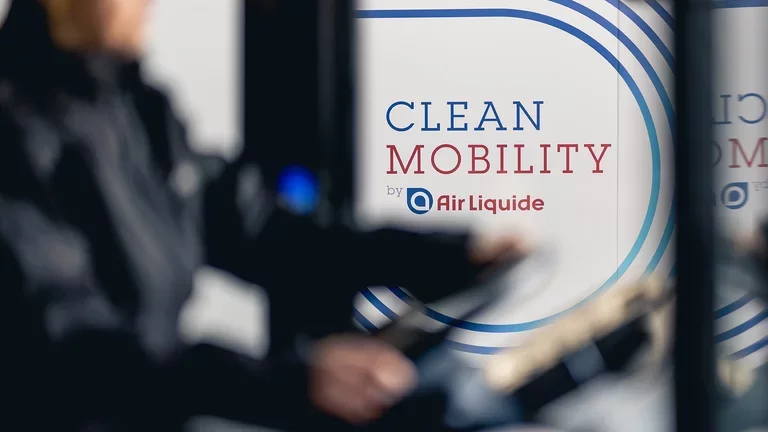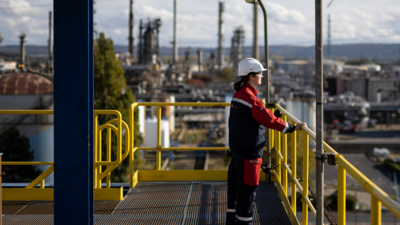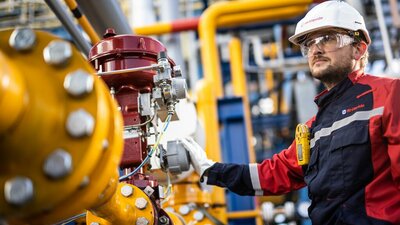Air Liquide and Faurecia are bringing liquid hydrogen to heavy-duty vehicles
Published on September 14, 2022
5 minutes

With a range of 1,000 km, optimized storage capacity and a tested technology ready within five years, liquid hydrogen tanks offer an attractive solution for decarbonized, high-performance heavy mobility. Discover the challenges facing the teams of Air Liquide and Faurecia as they develop this technology.
Air Liquide is combining its expertise with that of global automotive supplier Faurecia, a company of FORVIA Group, to accelerate the development of liquid hydrogen in the heavy mobility sector. The goal: to decarbonize heavy vehicle fleets while maintaining their range thanks to liquid hydrogen tanks, a highly adapted technological choice.
Liquid hydrogen, a solution for long-distance transport
Designing a new generation of hydrogen tanks
Faurecia considers that current cryogenic tank technology for liquid hydrogen can indeed be expanded to the automotive world. "We know the requirements of this sector and are well placed to meet them," explains Julien Hergott, R&D Engineer and Thermodynamic Systems Expert at Faurecia. "I would emphasize the need for extremely efficient tank insulation and a tank design allowing for cost-efficient mass production."
Drawing on its in-depth experience with automotive manufacturers, Faurecia can develop a technical solution most adapted to their needs. For Air Liquide, the main challenge is to set up a complete liquid hydrogen supply chain. "This requires setting up an interface between the stations and the vehicles to enable fast and secure hydrogen recharging," says Guillaume Petitpas. “And in parallel, we must continue our tank development." Currently at the prototype stage, this distribution supply chain is already being tested. It will be developed as early as 2025 and deployed in 2027, when the tanks will be marketed.
Why the Air Liquide / Faurecia partnership works
Experts with complementary strengths
Helping customers decarbonize their fleets is a priority for both Air Liquide and Faurecia, who are mobilizing a wide range of resources to develop the cutting-edge liquid hydrogen tanks as quickly as possible. Faurecia's engineers are specializesin automotive standards and regulation, the optimization of complex systems, product design and manufacturing
processes to ensure this technology can be exploited for the mobility sector. Their 3D simulation teams visualize all the mechanical, thermal and fluid aspects involved. In parallel, Air Liquide's experts bring their in-depth knowledge of hydrogen liquefaction, including their mastery of the codes and standards specific to this molecule and its value chain (production, storage, distribution, etc.), a major challenge for the successful deployment of a liquid hydrogen supply chain for heavy vehicles. Their expertise in insulation, developed as part of the Ariane program for rocket tanks, is also a real asset.
sLH2 or CcH2?
Storing hydrogen in cryogenic form causes a density increase compared with storage at ambient temperature, permitting a greater storage capacity. The main challenge of the technology lies in the thermal insulation of the tank to maintain the temperature of the liquid at -253° C. An increase in its temperature would lead to an increase in pressure and a consequent loss of molecules if the vehicle is parked for a long period. In addition to better thermal insulation, one way to reduce these losses is to increase the storage pressure. Solutions for this include sLH2 (subcooled hydrogen with a maximum pressure of about 20 bar), which is currently the preferred solution, and CcH2 (cryo-compressed hydrogen with a pressure of up to 350 or 400 bar). While the second solution does significantly reduce molecule loss by ensuring extremely high pressure, it is more expensive and takes longer to develop. The sLH2, on the other hand, offers a good compromise in terms of performance-use balance, user cost and time to market.







